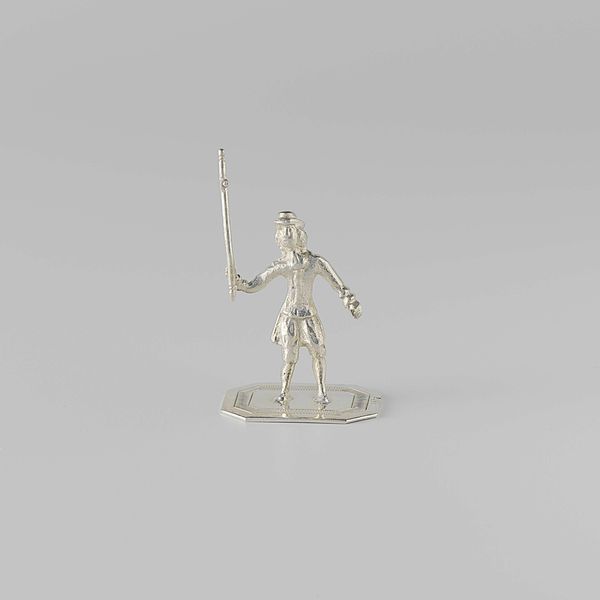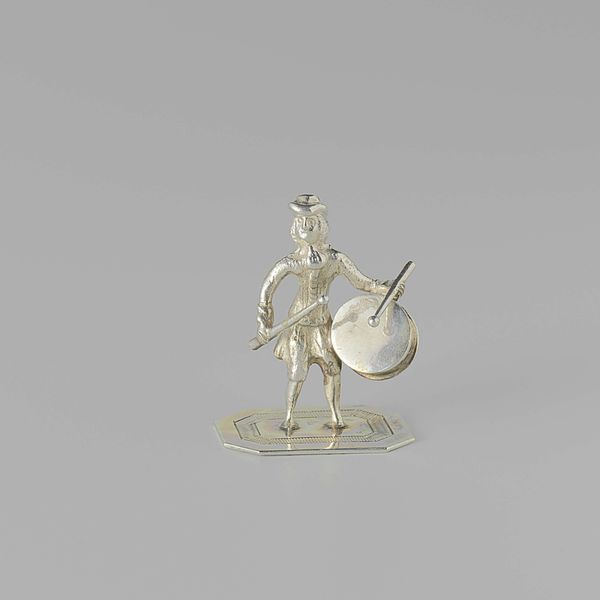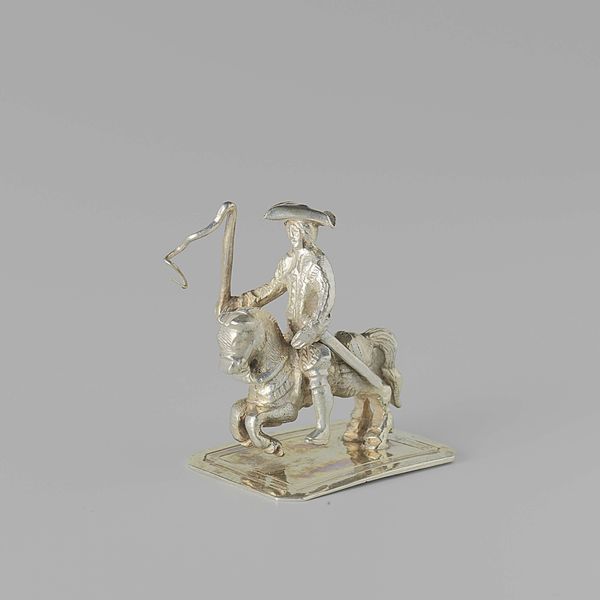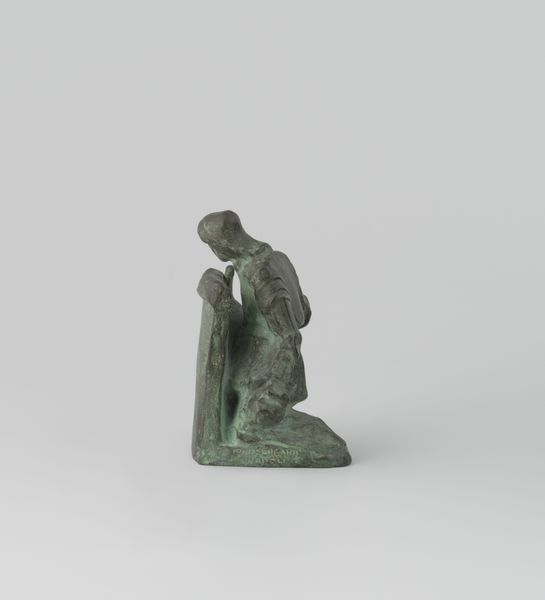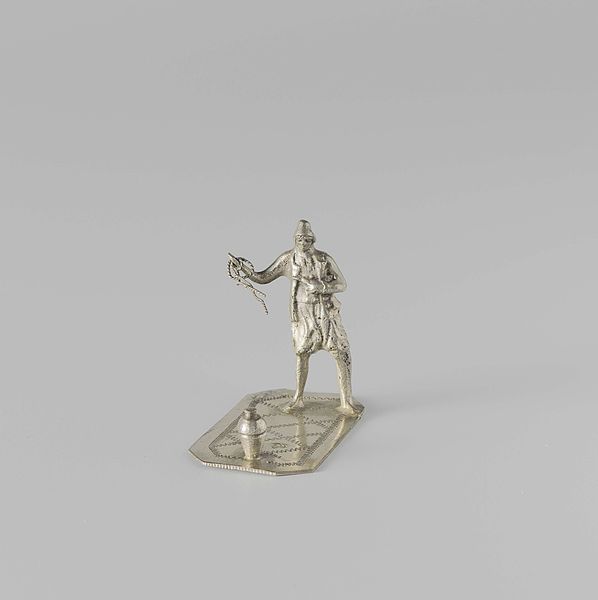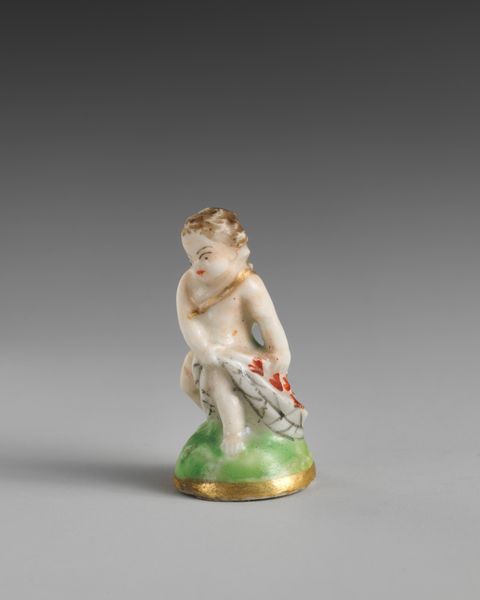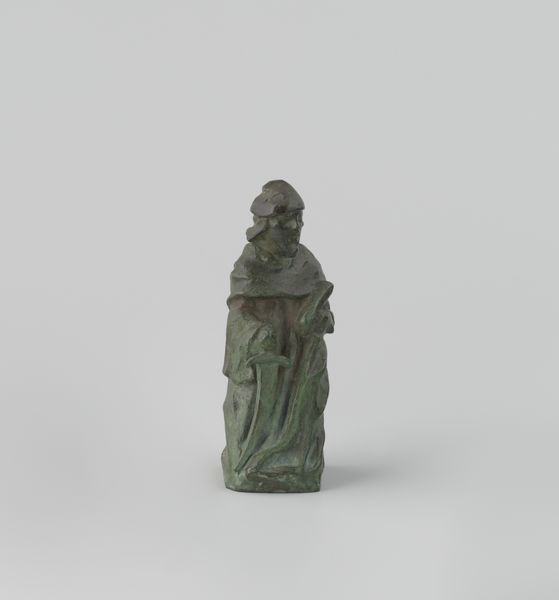
metal, sculpture
#
portrait
#
neoclacissism
#
metal
#
figuration
#
sculpture
Dimensions: height 3.9 cm, width 2.0 cm, depth 1.1 cm, weight 16.94 gr
Copyright: Rijks Museum: Open Domain
Curator: Our attention is drawn to this intriguing metal sculpture titled "Cupido," crafted around 1822-1827 by Gijsbert Barbiers. What are your immediate thoughts? Editor: It has a curious stillness. Despite the figure’s implied movement of holding a bird, there’s a weighty, almost melancholic air about it. Perhaps due to the subdued metallic surface? Curator: The sculpture is fascinating from a material perspective. Its creation speaks to the artistic and artisanal processes prevalent in the early 19th century. Consider the metal casting – the labor involved, the mastery needed to translate the artist's vision into this form. What societal narratives might this choice of metal communicate about status, taste, and luxury? Editor: Absolutely. Considering its period, we can see how this piece functions within the rise of Neoclassicism. The idealized figure, the careful contrapposto stance, echoes a fascination with antiquity which was tied to the political and cultural climate of the time, where ideals of order and reason were highly valued and strategically promoted. Curator: Precisely! And looking at the production value also begs the question, where might this have been displayed? What social function might this precious item have served to its original owner, and what conversations might it have started regarding commerce, social mobility and artistic taste? Editor: Right, placement is vital to consider; in someone's home, displayed as a marker of status, intellect, or perhaps romantic sensibility, carefully arranged within domestic spaces which reflected and further cemented these very social roles and codes. Curator: So, from the manipulation of material to social dynamics, a single artwork creates an ecosystem of meaning. Editor: Indeed. This piece gives us a poignant moment to think about these echoes. Thank you for offering insightful observations.
Comments
No comments
Be the first to comment and join the conversation on the ultimate creative platform.
